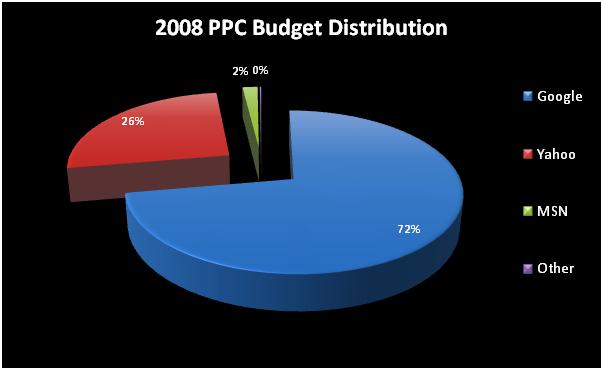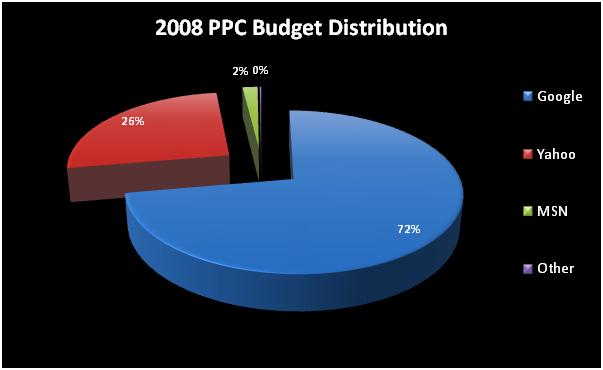Last week the PPC Hero team had a discussion about what paid-search tasks advertisers have the most problems with. One of the biggest we came up with was concerning spending budgets and how they are distributed between the various search engines. This is a huge hurtle to jump – right up there with “which search engines should I use?” Unless you have extensive experience with setting up new campaigns (and the data that comes with it), deciding budget distribution can be a difficult decision to make.
Why is PPC budget distribution important? First of all, the fact that you’re distributing at all is a good thing! I’m a strong believer that putting all of your paid-search eggs in one basket is a poor decision. It is important to test your advertising in more than one search engine (AdWords seems to be the default). The second point is that when you’re dividing your monthly budget between search engines, you need to provide that account with an appropriate budget. What do I mean by appropriate? Most of your money should be spent where most of the traffic is, etc., etc.! Thirdly, knowing your PPC budget distribution will allow you to set strong goals for your campaigns. Check out this post from ShimanSandler.com for an example of how PPC budget distribution is used for planning and strategy.
Surprisingly, not many other PPC blogs talk about budget distribution and how this decision is made within their PPC management process. A great example of someone who is talking about their budgets is the RKG Blog (Rimm-Kaufman Group). The last report they made was in July and they reported a spend breakdown as follows: Google 80%, Yahoo! 15%, Microsoft 5%. Their reporting is based on aggregate totals of all of their PPC clients.
Using the RKG Blog as my inspiration, I set out to analyze my own clients’ budget distribution. The following stats are based on an average of 2008 monthly spend:


For my own clients, the proportions vary a little – with considerably more money going towards Yahoo! than in the RKG Blog example. My numbers are closer to their report a full year prior in 2007. This goes to show that numbers can fluctuate and that spend is particular to advertiser, client and performance metrics. Additionally, I’ve got a fourth category titled “Other.” This is for 3rd tier search engines like Ask.com, Business.com, etc. This is a great exercise for any PPC advertiser to follow for perspective on where their money is going. But that’s not my point today!
The real question here is how do you decide how much budget to allot to each search engine at the onset of a new pay-per-click campaign? I would propose that everyone gives the “big 3” search engines a fair chance when kicking off a new campaign. Go ahead and follow my general breakdown as a STARTING POINT. Give Google 72%, Yahoo! 26% and Microsoft 2% of your campaign’s monthly budget (leaving “Other” search engines for a later date). This will give you a baseline for determining a budget distribution plan.
As you progress and accrue monthly data of your own, you can determine core performance metrics per search engine. Use this data to reassess your budget distribution. If MSN is rocking for your PPC campaign, increase the budget! Find an under-performing campaign or ad group in Google or Yahoo! and transition that money to the better performing account. One of the first lessons I was taught in managing PPC is that it’s all about “swapping” the good for the bad. Find the campaigns/ad groups/keywords that are working well in terms of your most important KPI and then start removing spend/attention from those campaigns/ad groups/keywords that aren’t working well. Again – literally swap the good for the bad.
I hope that this serves as a simple starting point for determining budget distribution when creating new PPC campaigns. If you have any questions or would like to add to the discussion – please drop me a comment!




